Food and nutrition topics likely to impact the Dairy Community in the next 1 to 3 years.
By: Megan Holdaway, RDN and Bessie O'Connor, RDN
The world is changing at a rapid pace with complex health, education, political and economic challenges fueling a feeling of instability.1 In the U.S., rising obesity rates in both children and adults and a growing
mental health crisis remain critical public health priorities. Urgent actions are needed to foster the future health of individuals and families. Following an extended period of school closures, schools are recognized for the essential role they play
within communities, yet teacher shortages and a changing education environment pose new challenges. Recognizing the human impacts resulting from inflation, climate disasters, international conflict, rising food costs and growing nutrition insecurity
is important as we move forward together.
In this time of uncertainty and opportunity one thing is clear: successful innovations made during the pandemic and the momentum of health and nutrition policies need to be leveraged
to create a lasting impact. There is an opportunity to come together, as individuals, organizations and communities, to promote equitable access to nutritious food and to advocate for the role of dairy foods in healthy eating patterns. Understanding
trends in the external environment is an important step toward discovering solutions to meet the needs of children and families.

 Nutrition
Policy is Progressing from Conversation to Action
Nutrition
Policy is Progressing from Conversation to Action In September 2021, the UN Food Systems Summit brought leaders together to set the stage for global food systems transformation.2 Since then, there has been significant action to address hunger and food insecurity on both the state and national levels. California made history with the Universal Meals Program, making it the first state to permanently provide breakfast and lunch free for all school-aged children. The California Department of Food and Agriculture’s 2022 California Farm to School Incubator Grant Program distributed unprecedented funding to improve children’s health, promote nutrition equity and support local agriculture and economies.3
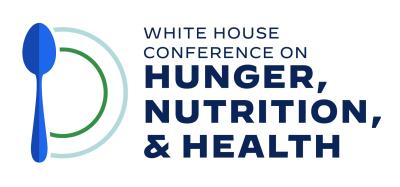 The
2022 White House Conference on Food, Nutrition, and Health convened in September for the first time in over 50 years and resulted in a federal strategy that outlines specific priorities to end hunger, improve nutrition and physical activity and reduce
disparities surrounding them.4 Other national efforts include the child nutrition reauthorization bill, known as Healthy Meals, Healthy Kids Act,5 which was introduced
in July 2022 and is currently moving through the legislative process. If passed, it could significantly expand children’s access to federal nutrition programs. Other actions include the release of a proposed rule from the U.S. Food and Drug
Administration that would revise the definition of how the word “healthy” can be used on food and beverage labels.6
The
2022 White House Conference on Food, Nutrition, and Health convened in September for the first time in over 50 years and resulted in a federal strategy that outlines specific priorities to end hunger, improve nutrition and physical activity and reduce
disparities surrounding them.4 Other national efforts include the child nutrition reauthorization bill, known as Healthy Meals, Healthy Kids Act,5 which was introduced
in July 2022 and is currently moving through the legislative process. If passed, it could significantly expand children’s access to federal nutrition programs. Other actions include the release of a proposed rule from the U.S. Food and Drug
Administration that would revise the definition of how the word “healthy” can be used on food and beverage labels.6
 Studies
show that collectively these actions may be working. The USDA Economic Research Service reported that 12.5% of households with children experienced food insecurity in 2021, down from 14.8% of households in 2020 and 13.6% in 2019.7 A recently released report on WIC found that children who participate in the program through age five have better overall diet quality.8 The expansion of federal food programs during the pandemic proved to be a success
9 and these indicators of the positive impact speak to the need for continued investment in these programs, as well as ongoing measurement of their impacts.
Studies
show that collectively these actions may be working. The USDA Economic Research Service reported that 12.5% of households with children experienced food insecurity in 2021, down from 14.8% of households in 2020 and 13.6% in 2019.7 A recently released report on WIC found that children who participate in the program through age five have better overall diet quality.8 The expansion of federal food programs during the pandemic proved to be a success
9 and these indicators of the positive impact speak to the need for continued investment in these programs, as well as ongoing measurement of their impacts.
Implications: As nutrition policy continues to shift beyond advocacy to action, opportunities to provide input and make an impact through collaboration are increasing. Dairy Council of CA will continue to track and submit public comment on relevant issues and bring partners with shared goals to the table. The dairy community can also engage in these important policy dialogues, amplifying the important role that milk and dairy foods provide within federal nutrition assistance programs. Dairy Council of CA is here to provide research and information, which demonstrates how dairy foods improve nutrition security as part of healthy eating patterns. Collaboration will continue to be imperative in addressing complex issues and increasing nutrition security for children and families

 The
Functional Health Benefits of Dairy Foods Solidify Their Role in Improving Diet Quality
The
Functional Health Benefits of Dairy Foods Solidify Their Role in Improving Diet QualityResearch continues to demonstrate dairy foods’ complex and versatile contributions to health at all life stages. During pregnancy, the inclusion of milk and yogurt in a pregnant person’s diet provide iodine and choline, two important nutrients that support neurocognitive growth and development.10,11 Throughout childhood and beyond, dairy foods supply high-quality protein and help improve eating patterns and are a key marker for diet quality. During early adulthood, diet quality is vital to maintain nutritional status and set the foundation for child-bearing years and longevity;12 however, lack of nutrition security among young adults is a growing concern.13,14 For older adults, a recent study found that those with low milk consumption were able to increase glutathione, an antioxidant responsible for reducing oxidative stress in the brain, by increasing their milk consumption to the recommended three servings per day. Milk consumption could be a simple and safe option to improve brain health as people age.15
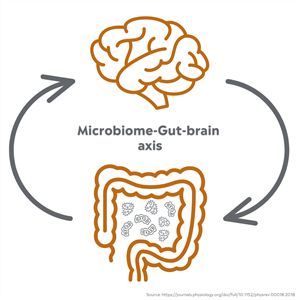 At all life stages there is increasing evidence for how the dairy food matrix improves gut health and the range of health systems
it supports to impact overall health. This includes reducing inflammatory markers associated with chronic diseases16 and optimal immune function through delivery of immune boosting nutrients, like vitamin
D, protein, and zinc.17 Health experts are exploring the “gut-brain axis” and how the gut and brain positively or negatively affect each other to influence mental health and brain function.
18 Researchers are also looking into how gut bacteria may help regulate components inside bones to weaken or strengthen bone mass, depending on the microbes present in the gut.19 In
addition, robust scientific evidence continues to show that consuming dairy foods at all fat levels, like milk, cheese and yogurt, is associated with neutral or reduced risk for multiple chronic diseases beyond bone health.20,
21 The accumulating evidence for dairy’s dynamic role in health reinforces its value at all ages to maximize the diverse lifelong benefits.
At all life stages there is increasing evidence for how the dairy food matrix improves gut health and the range of health systems
it supports to impact overall health. This includes reducing inflammatory markers associated with chronic diseases16 and optimal immune function through delivery of immune boosting nutrients, like vitamin
D, protein, and zinc.17 Health experts are exploring the “gut-brain axis” and how the gut and brain positively or negatively affect each other to influence mental health and brain function.
18 Researchers are also looking into how gut bacteria may help regulate components inside bones to weaken or strengthen bone mass, depending on the microbes present in the gut.19 In
addition, robust scientific evidence continues to show that consuming dairy foods at all fat levels, like milk, cheese and yogurt, is associated with neutral or reduced risk for multiple chronic diseases beyond bone health.20,
21 The accumulating evidence for dairy’s dynamic role in health reinforces its value at all ages to maximize the diverse lifelong benefits.
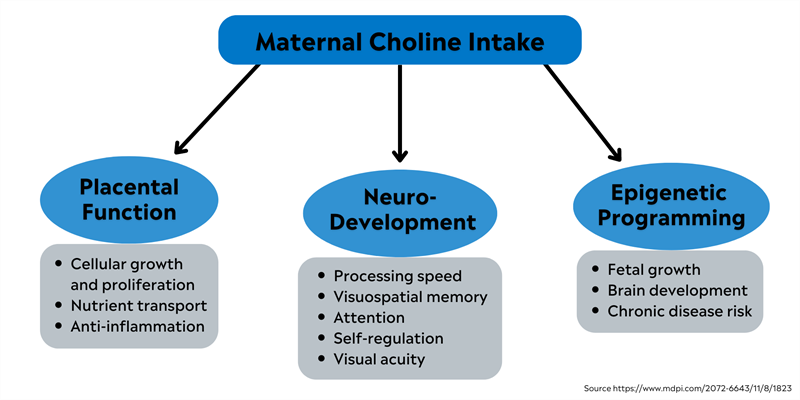
Implications: Nutrition research continues to identify the diverse and unique benefits of milk and dairy foods, beyond isolated nutrients, from the earliest stages of development into older adulthood. This accumulating evidence creates a strong platform for the dairy community to elevate dairy’s role in healthy eating patterns throughout the lifespan. There is opportunity to engage a wide range of audiences to amplify nutrition education that reinforces a value for milk and dairy foods while providing environmental supports to ensure that they remain accessible.

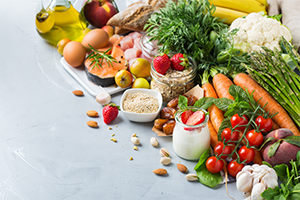 Flexitarian
Consumers Drive Value for Both Plant and Animal-Source Foods
Flexitarian
Consumers Drive Value for Both Plant and Animal-Source FoodsConsumers are continually being challenged to make sense of how their food choices impact their health and the environment.22 Over the past decade this conundrum has influenced an increase in the plant-based food market 23 including plant-based beverages.24 As consumers and policymakers seek solutions to health and environmental concerns, dietary guidance continues to emphasize the contribution both plant and animal-source foods can make on improved diet quality throughout the lifespan.25
Conversations about what constitutes a sustainable, nutritious diet are starting to reach consumers and slow the trend towards processed plant-based foods.26 Simultaneously, there is a rising popularity of the flexitarian diet, which was rated number two in US News & World Report’s Best Diets report for two years in a row.27 The flexitarian lifestyle increases the consumption of plant proteins, fruits, vegetables, whole grains, dairy and reduces meat, but does not eliminate it. With the increasing popularity of the flexitarian diet, there is marketspace for a wide variety of both plant and animal products. In fact, research from the U.K. shows that it’s difficult to distinguish dairy consumers from plant-based consumers; in most cases, both are purchased.28
To meet more complex consumer values, food companies are expanding to include plant-based meat and dairy alternatives, but some vegan-based companies are expanding their product portfolio to include dairy products. As an example, a plant-based ice cream company expanded their product line to include grass-fed dairy ice cream, citing the need to help build a more sustainable world.29 There is a renewed value for building healthy, sustainable food systems, in which whole and minimally processed animal and plant food sources are thought of as synergistic and can provide individuals flexibility to meet their nutritional, cultural, socioeconomic and environmental priorities.
Implications: With sustainable nutrition as a driving force, consumers and policymakers are eager to find a balance between personal and environmental health. Dairy Council of California continues to engage stakeholders through education and thought leadership, highlighting the value of milk and dairy foods in sustainable nutrition. While plant-based alternatives may not go away, the taste, nutrition, and cultural relevance of dairy foods has influenced a flexitarian approach to eating that embraces both plant and animal sourced foods.

 School
Milk Helps Ensure Nutrition Security but Faces New Challenges
School
Milk Helps Ensure Nutrition Security but Faces New ChallengesDairy milk continues to be a required and vital component of school meals because of its positive impact on health outcomes and nutrition security. New research shows a null or inverse relationship between milk and childhood overweight/obesity.30 Additionally, higher dairy intake may lead to better executive function performance, or the set of mental skills that include memory and self-control.31 School meals and snacks were the richest sources of dairy foods
for children ages 2 to 19.32 This is especially important in communities where a high number of children experience food insecurity, since nutrition and diet quality can positively impact lifelong health and educational
success.
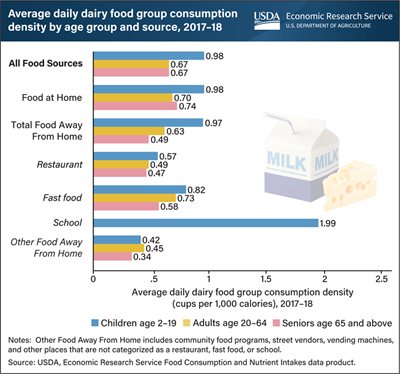
Yet recent conversations about health equity are causing some to question this requirement. Advocacy organizations that want to add plant-based beverages as an option in school meals highlight the importance of supporting not just the climate and health but meeting the cultural needs of Black, Latinx, Asian and Indigenous students who may be lactose intolerant.33 Expanding access and promotion of plant-based beverages, such as soy-based beverages currently approved as a milk substitute in federal school meal programs, does not support state and federal government investments to bring locally and minimally processed foods into schools. Currently, students with lactose intolerance can choose lactose-free dairy milk as an option in some places. Additionally, dairy foods are part of many cultural food traditions, and their unique package of nutrients may be difficult to replace if removed.
Implications: Milk and dairy foods have a rich history in school meals programs and research supporting its impact on optimal growth and development of children continues to support their inclusion in these programs. The requirement to provide milk to all children participating in federal meal programs, though in alignment with current dietary recommendations, faces opposition from some special interest groups. As evidence builds, it is increasingly important for the dairy community to communicate these benefits, advocating for the importance of milk within school meal programs. Additionally, including lactose-free dairy milk is potentially a solution for diversifying offerings to meet the needs of students and local farm to school programs. Dairy Council of CA continues to support the dairy industry through collaboration, providing education, research translation and information on the critical contributions of milk in supporting the nutrition security of children.


Policy Lags Behind Social Media Food Marketing
Children and adolescents encounter food and beverage marketing through a variety of media channels. Increasingly, they are exposed to marketing via social media apps, where information is largely unregulated34 and the opportunity for influence is enormous.35 Research has shown that food and non-alcoholic beverage marketing on video streaming sites receive millions of views by consumers.36 Food and non-alcoholic beverage marketing is associated with increased intake, choice, preference, and purchase requests in children and adolescents.37
Policymakers and experts are working to respond to a media landscape that changes rapidly. The World Health Organization released a draft of their guidelines for protecting children from the impacts of unhealthy food marketing. The document is meant for all participants in the food system, including governments and food and beverage industry members, and calls for a restriction on food marketing to children to protect them from its potentially harmful impacts.38 Some researchers maintain public policies that promote healthy lifestyle choices are essential to supporting the health of children, and actions should be taken to limit food advertising to children, as well as recommendations to tax unhealthy foods. 39
People of all ages are influenced by the authentic, realistic and relevant messages that they encounter every day. Misleading nutrition information is widespread, creating consumer confusion, shaping misperceptions around health, and causing many to overestimate the healthfulness of their diets.40 There is ample opportunity for individuals and organizations to provide evidence-based nutrition education to help guide decision-making.41
Implications: A growing number of children and adolescents experience food and beverage marketing via social media platforms. High engagement with social media is an opportunity for the dairy community to continue connecting with individuals, including younger generations, about dairy’s nutrient contributions and sustainability stories. Information is most effective when it is clear and consistent, as well as authentic and highly visual. As best practices for sharing food and nutrition messages on digital platforms are developed, Dairy Council of CA will continue educating and informing on dairy foods’ unique and essential role in healthy eating patterns through its programs and resources, including Mobile Dairy Classroom’s virtual field trips, which are an example of successfully engaging younger generations via digital platforms.